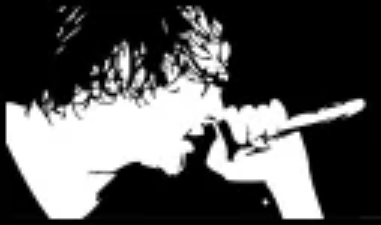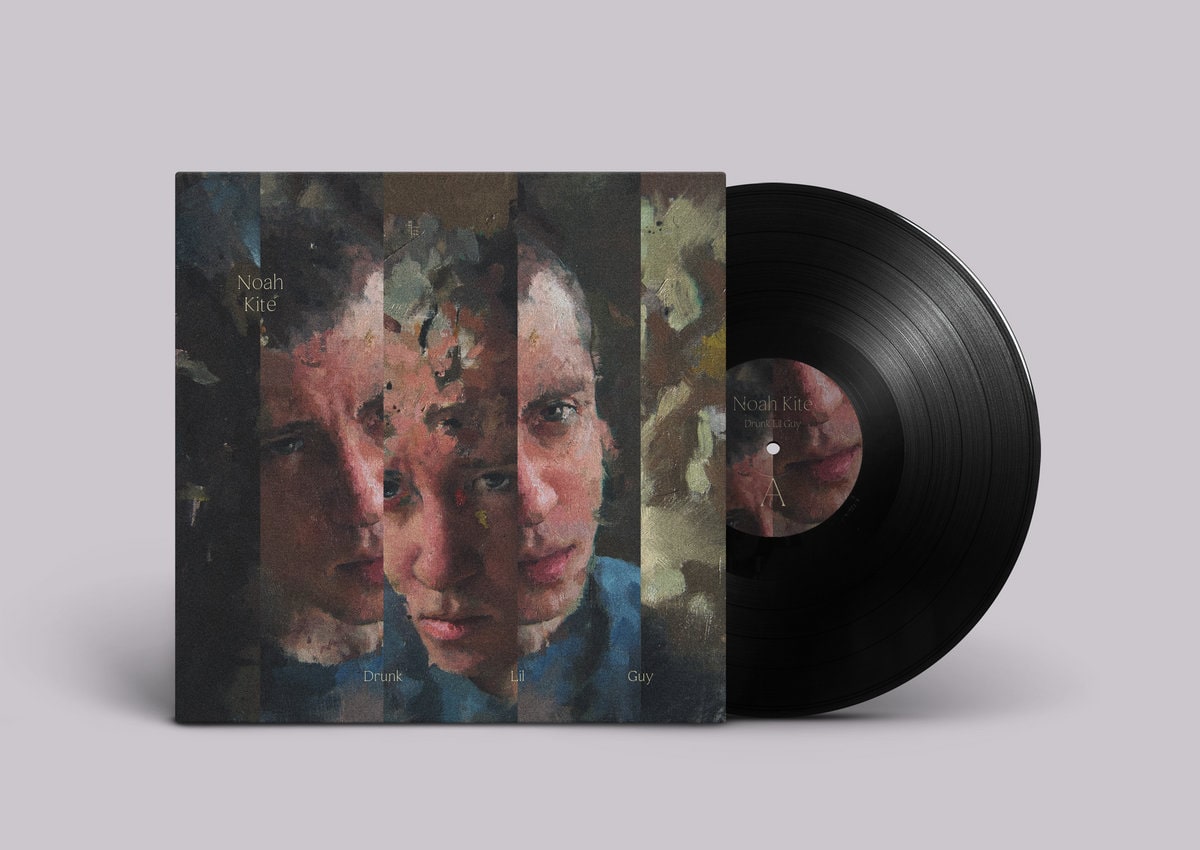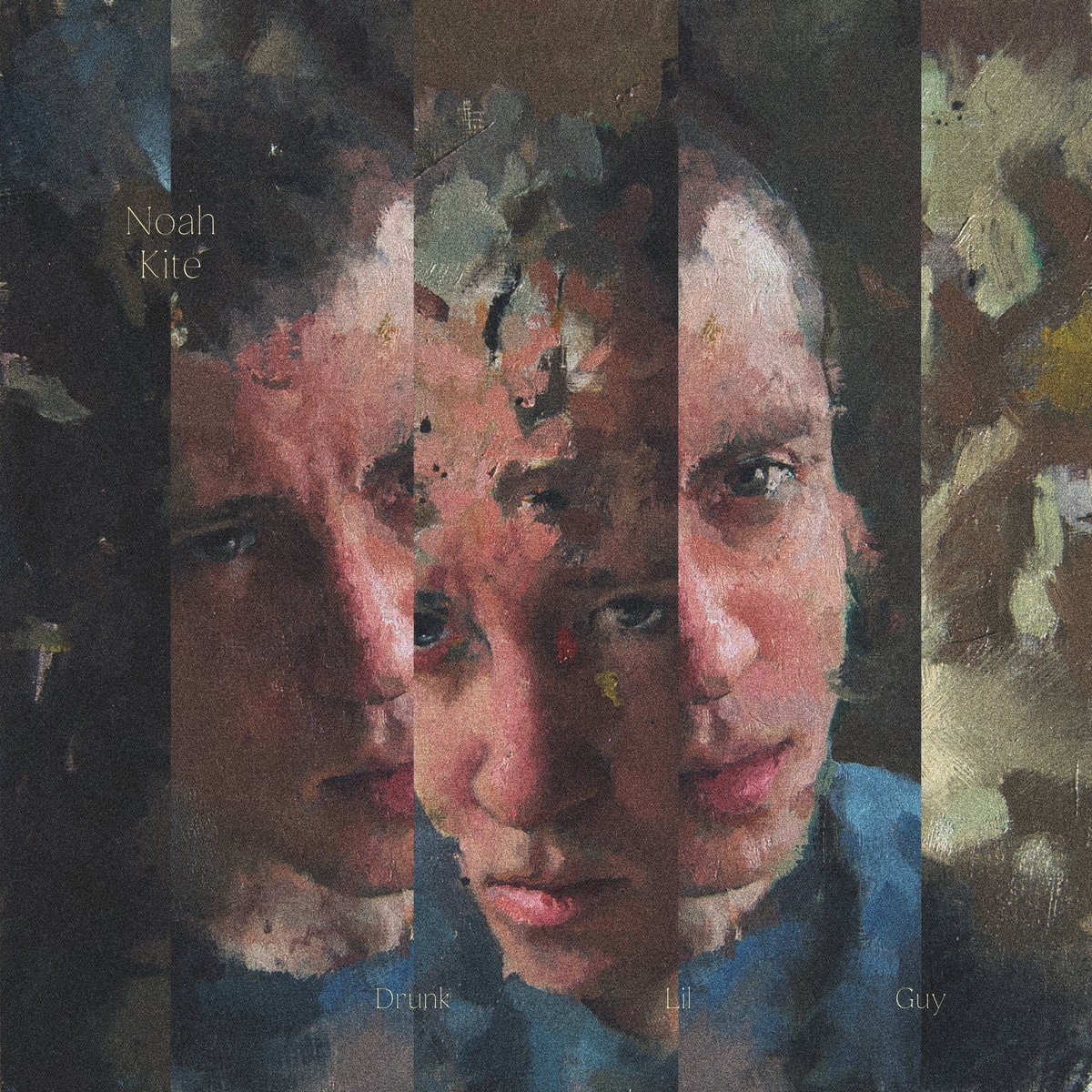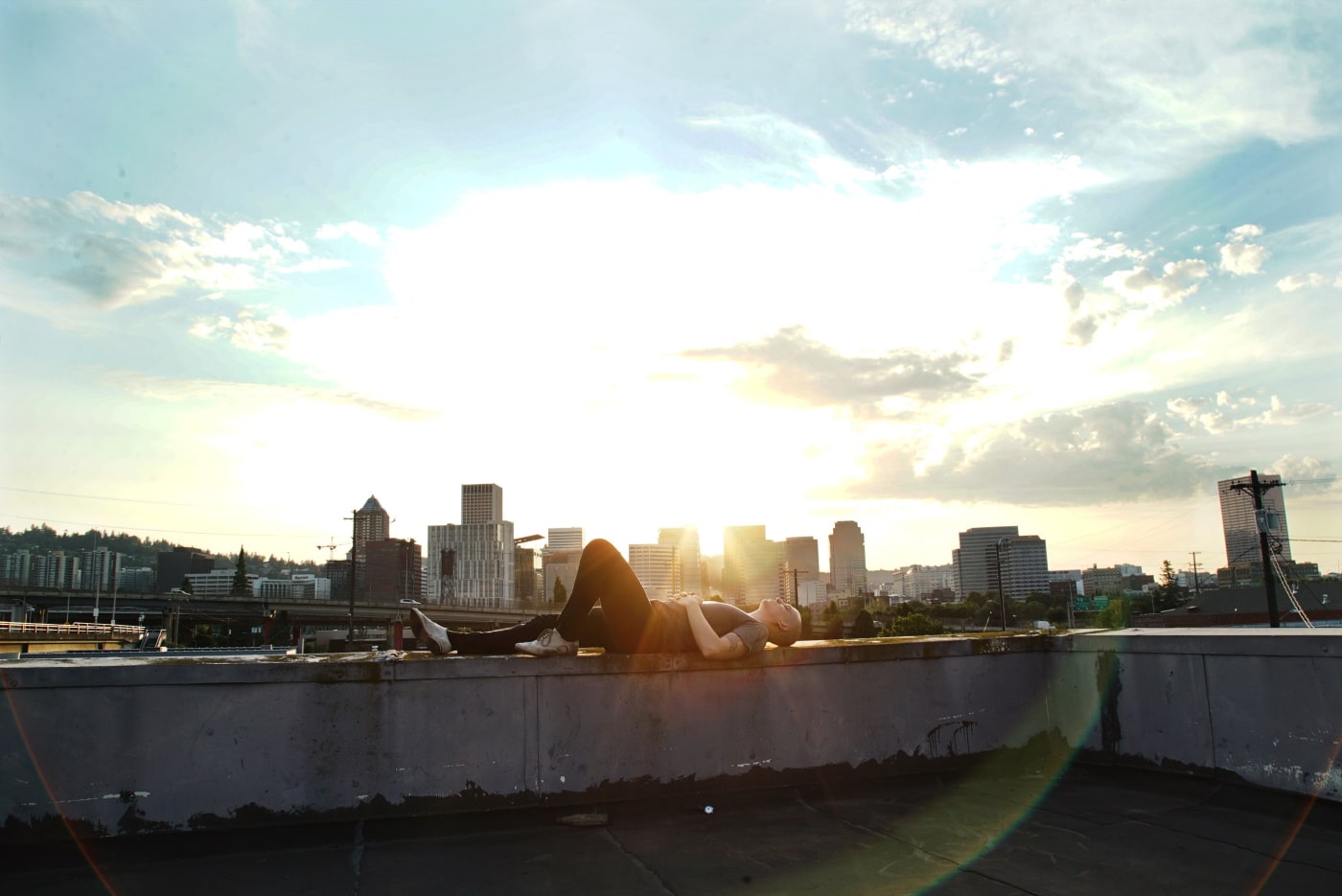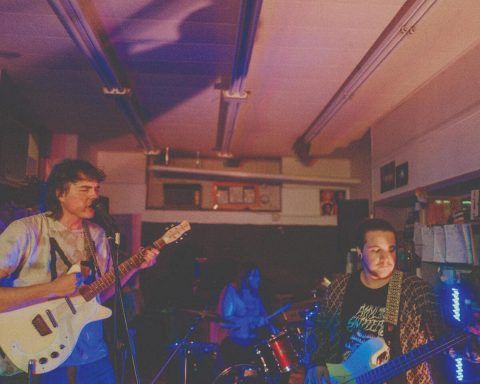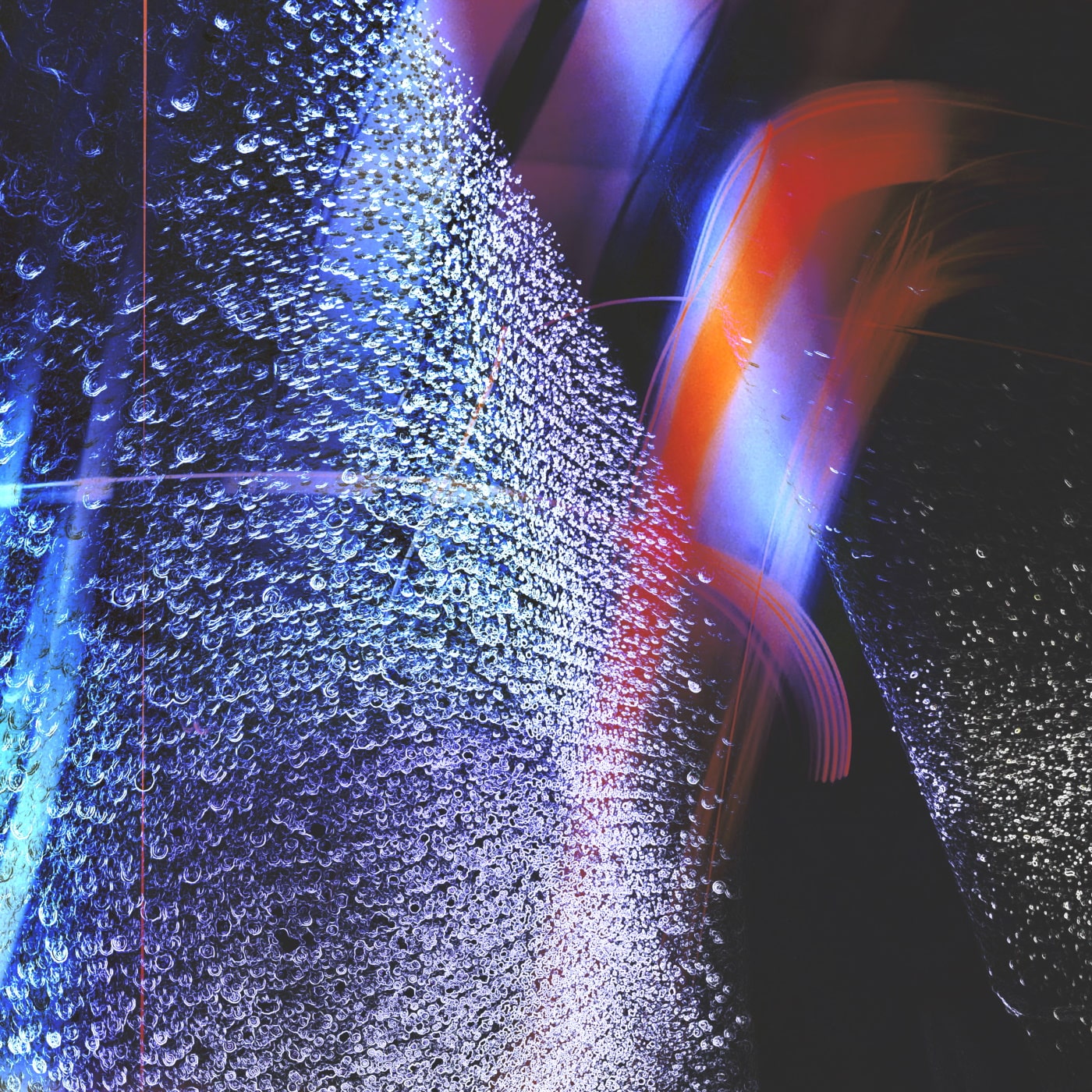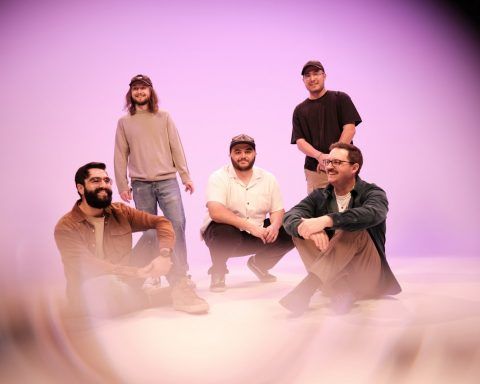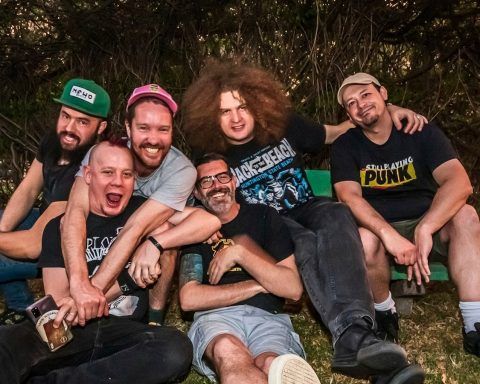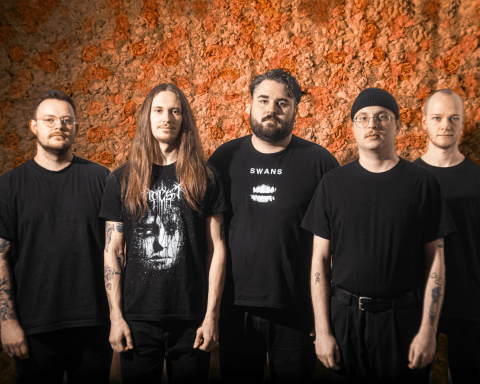It’s one thing for an album to trace the path of a relationship along its traditional arc; early curiosity expands into lunatic passion before cooling to inertness. But what if that line were not a curve at all, but instead a jagged sawtooth of highs and lows thrusting the listener into the air before crashing them into the dirt below? Well that would be a much more visceral, and accurate, telling of the modern relationship. That is the story of Drunk Lil Guy, the latest album from chamber folk innovator Noah Kite, who expertly blends American folk, blues, jazz and folk influences and showcases his intriguing talent, just stretching out. Adventurous, satisfying and true all the same.
The son of an acting coach and a therapist, Kite seems to have it in his DNA to blend the dramatic and analytic. Each musical wave crest and fall mirrors a turn in the story. Instruments rest for minutes before suddenly emerging.
𝐸𝑚𝑜𝑡𝑖𝑜𝑛𝑠 𝑎𝑛𝑑 𝑚𝑜𝑡𝑖𝑓𝑠 𝑠𝑢𝑠𝑡𝑎𝑖𝑛 𝑎𝑛𝑑 𝑡ℎ𝑒𝑛 𝑑𝑟𝑜𝑝 𝑖𝑛𝑡𝑜 𝑜𝑏𝑙𝑖𝑣𝑖𝑜𝑛.
The tone switches suddenly from accusation to epiphany. It is the sound of someone going through it. Alongside the the musical tumult, the steady voice of Kite never loses his cool despite the searing intimacy of the song’s content. He thoughtfully guides us through the story of his relationship, in as well as struggles with friends, substances, sex and codependency. He has been clearly affected by the proceedings, but is determined to stare into them without blinking.
Kite harbors deep appreciation for both the harmonic palette and the spirt of collectivism employed by fellow art/folk/pop auteurs Steely Dan, Fleet Foxes or Sufjan Stevens. While no stranger to composition himself, he enlisted a team for Drunk Lil Guy; UK Producer Sebastian Rogers, Laura Gershman on Oboe/English Horn, Alan Cook on Percussion, Colin Corner on the upright bass, with Esme Schwall providing cello and backing vocals. The agency newly given to bandmates brings a three dimensionality to the music. Each instrumentalist is an established voice, rather than movie-strings backing.
𝑇ℎ𝑒 𝑎𝑙𝑏𝑢𝑚’𝑠 𝑝𝑟𝑜𝑑𝑢𝑐𝑡𝑖𝑜𝑛 𝑝𝑟𝑜𝑣𝑒𝑑 𝑎𝑠 𝑐ℎ𝑎𝑜𝑡𝑖𝑐 𝑎𝑠 𝑖𝑡𝑠 𝑠𝑢𝑏𝑗𝑒𝑐𝑡 𝑚𝑎𝑡𝑡𝑒𝑟.
Months of rehearsal were leading to a grand full-band live recording session. The pandemic shuttered these plans mere days before recording was to begin. The band altered course to record individually at Magic Closet Studios, providing flexibility and space for further development. Like the angular flight path of the album’s core conflict, altered plans and shattered exceptions were reformed into something all the more beautiful.
“Drunk Lil Guy offered a great set of songs to be represented by a distorted hyperreal/surrealist album cover, so I went after it.” – comments Noah.
“I’d spent most of the 2010’s in Europe, touring Tuscany and Belgium, teaching English in France, and in those travels I’d made some talented friends. The one of the best artists I’ve ever known is a classically trained painter I met in Antwerp named Samuel De Maré. He’s both the warmest person you could imagine, and takes his art very seriously; Once, over drinks I asked him to sketch my then-girlfriend on the back of a coaster just for fun, and he spent half an hour sharpening his pencils.”
“For this project though we had ample time and a shared vision; two versions both somber and striking, reflecting the contents of the record. Samuel got probably 100 photos of me looking every kind of hollowed out and went to work toying with different versions. What came out was one clear, classical piece, and another that really captured the dark multifaceted perspective that exists in my music.
I then cajoled a graphic designer, Sam Coussens, whom I’d seen previously do amazing things with Samuel’s work to apply his skill here. After playing with the concept and bouncing it off of me a couple times he melded the two versions to bring out the fragmentation of self and create the album cover we have today.
On songs like Our Friends and Shoreline, themes of transitory states, celebrating the small moments of personality, the mercurial feelings I usually smooth out for the sake of a relatively calm social life, come out. “Heres to who you were when you” paired with these momentary glimpses inside someones head is repeated in the refrain of Our Friends for a reason: when they sit so far apart they seem normal, but when scrunched up close it’s a tornado of madness, and I think the slices of the art on the cover reflect that jaggedness contrast.”
“Theres also a cracking/cutting-open to the cover art, where the despondent version is cleaved in two by an emerging distorted self, multiple eyes branching out in a smear of paint, the truth in doubt fracturing even the depressive state, which is another theme in Our Friends, and its counterpoint, Shoreline. The former starts “Depression skews my senses yet/ consent in all its forms proves a set of debts/ a sense of will, that expensive thrill, I rarely get/…” is balanced against the refrain of Shoreline: “Hey now, way down, you’re starting to feel again/ hey now, somehow, you’re starting to feel again.”
“Though no song quite takes it like Drunk Lil Guy. There are a lot of themes at play in that song: an inner turmoil that comes out as party-animal behavior, trying to escape the shadow of an abusive father and failing, having damaging coping behaviors only supported by ones “friends” because they make for a fun night, etc. But in those themes the central one is layers of self. Layers others get to accept and misunderstand as the whole self, or intentionally never dig beyond because they wouldn’t be useful at the bar or a party. It makes you think, how honestly empathic do your friends want to be with you? How honestly empathic do you want to be with your friends? And wheres the line?”
“But then all these small tragedies exude that look of quizzical hurt, that thousand-yard-stare, that swirl of a jaded “why?”. Whether it’s the necrotic love of This Body or its morbund herald Hair Ties, Despite All of This‘ recalled wrongs or Take Me To Your Room’s magnet tarp-pit of a lust story, they all have that look of late stage grief.”
Full Track by track commentary, by Noah Kite:
CARRION BIRDS: The opening track firmly establishes the boundaries of the project. A jaunty percussion pattern is quickly mellowed by sparse instrumentation. Kite’s voice enters the room boldly before settling into a more soothing tone, as if clearing his throat to gain the attention of a crowd before lowering his voice to invite them to lean in closer. Small peaks, long valleys. The vocals are not quite ASMR close in their production, but given ample priority in the front and center of the mix. The lyrics are delivered gently but clear in their singular target. It’s immediately evident that this will be a conversational album, and the unveiling of the who will be part of the journey. Oboe and strings enter early, developing the sound beyond what had been so far tracking as “indie”, now stepping firmly into the chamber folk circle. The minimalist accompaniment gives way entirely to the vocals at the half-way mark, as Kite uncorks a thoroughly slippery vocal melody, repeated as mantra, perhaps trying to convince himself.
HAIR TIES showcases a common emotion of the album: a deep tension bordering on anxiety, even when the topic is seemingly pleasant. The opening line “Hair ties, food in the fridge” is a masterful setting of scene using only six words. We clearly see present-tense insecurities gnawing at the edges of what is seemingly the bright early stages of a relationship. The addition of the female vocal during the repetitious chorus adds a sinister flare; one gets the feeling our protagonist does not know she’s there. The classical instruments are still present, though providing a more sweeping backdrop rather than specific melody. The track also demonstrates a core strength of Kite’s: maintaining intensity at low volume and pitch.
OUR FRIENDS: An acoustic guitar opens the proceeding with a finger-style technique so asymmetric it could be a sample. The drums manage to keep busy for the majority of the track without ever jumping to the forefront. Lyrically, we are provided with a series of anecdotes fleshing out the relationship that now seems to be in the past tense. In contrast with the early nervousness of “Hair Ties”, the mood is sorrowful, but possessing (possibly alcohol aided) acceptance. The line “Here’s to our friends, they were yours in the end” crushes in its simplicity. The composition images the emotional spiral as he fixates on this line, repeating and building until collapsing.
DESPITE OF ALL THIS: Here the chamber folk instrumentation stakes out its largest claim to a song yet. The opening stabs of horn, string and drum serve as the call to fingerpicked electric guitars response. The drums then split into a distinct rhythm while vocals provide their own cadence, creating a circular polyrhythm that borders on a round. Topically, Kite is equally scattered. “Was it the spit in my eye, was it the friend who died? ” as the anger fades a bit and the focus turns inward, questioning self.
DRUNK LIL‘ GUY: Kite leans into the folk side of the chamber folk equation. Acoustic guitar drives the track, as the lyrics are narrative in nature. We see a clearly dark story involving family dynamics, though the exact details are opaque. Kite’s voice is left raw and unadorned, allowed to quaver on held notes. There’s a conflict between sympathy and frustration in the messaging. The ending cuts out on a killer lyric, offering space for the listener to ponder what they’ve just been left with. “They’ll just say you’re out of your mind. You can ride that excuse til you die.”
TAKE ME TO YOUR ROOM is the closest to a true “pop” track on the album. But far from a sell-out move, the use of a more traditional chord structure feels light and celebratory, a new set of guidelines within which to create. Effervescent string and horn lines dance around the song, and the post chorus guitar solo is an exercise in joy. The chorus is a proper HOOK that shows even chamber folk musicians can honor the ancient tradition of using a song to ask someone to sleep with you. Appearing at the halfway mark, it’s a shot of energy into the proceedings. Though It’s evident that Kite can only contain his more sprawling creative urges for so long, as a minor bridge, a later key change and eventual dissolution into chaos remind the listener that Kite is a composer trying on pop shoes for fun.
RIGHT AGAIN: A drone sets the scene for a rolling guitar pattern. The vocals appear in multiplicate, admonishing the listener with advice or possibly conflicting urges. Kite’s voice almost breaks restraint into panic. There is a sense of foreboding as the instrumentation moves along swiftly, a feeling of spiraling towards an unwanted conclusion. That endpoint appears suddenly as the bottom drops out to a lone dissonant guitar line, while layers of female choral vocals build around a repeated epiphany: “jesus christ, i’m all she wants”. The song offers no response to this revelation, only a wide-eyed stare.
THIS BODY: Kite’s storytelling sometimes wanders across scenes, elaborating more than proclaiming. But here he goes for the jugular: “Do you remember when we, used to screw til 3am, now theres only this body and a grave to put it in.”
CORVALLIS: The tension of the previous two tracks relaxes as we return to a more narrative style. We are shown college scenes of a female figure, presumably the source of previous songs animus though here described in dispassionate fashion. The arrangement is dreamy and sumptuous, eventually disconnecting into a dreamscape. There is a sense of detachment here, but is marked by joyous outbursts. It is not evident if this is prologue or epilogue to the more visceral connection in the rest of the album.
SHORELINE brings the album to a reflective close. A gorgeously recorded acoustic guitar sits center while smaller elements accent. Kite’s signature compositional style is on full display; at all times possessing a gentle urgency that keeps the softest songs from dragging for even a second. There is a hopeful air here, the listener feels they have survived the journey and are looking towards better days. The female voice is present but no longer in direct focus, underpinning an optimistic chorus: “You’re starting to feel again”

